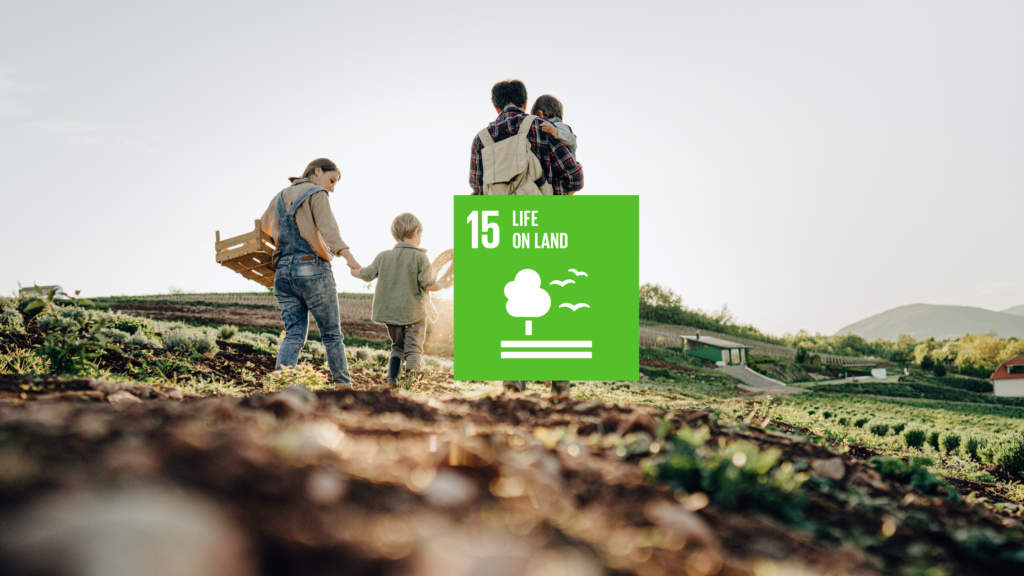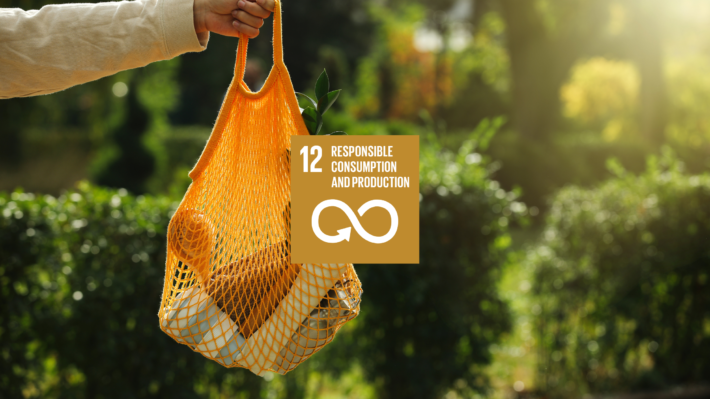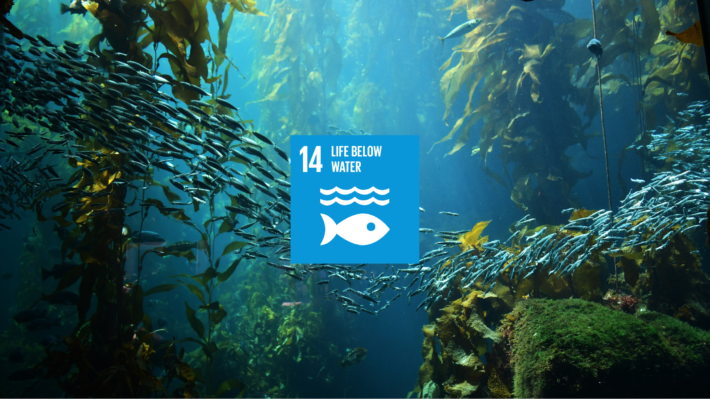Achieving Sustainable Development: SDG 15 Life On Land

The United Nations Sustainable Development Goal 15 (SDG 15) focuses on “Life on Land,” aiming to protect, restore, and promote the sustainable use of terrestrial ecosystems. This goal encompasses a wide range of critical issues, including biodiversity conservation, sustainable forest management, desertification, and land degradation. SDG 15 seeks to ensure that terrestrial ecosystems are resilient and can provide essential services for the well-being of humanity and the planet. In this blog, we will delve into the specific targets under SDG 15, the methods for measuring progress, and the achievements and challenges encountered so far.
Life On Land Targets
SDG 15 comprises several targets that address different aspects of life on land. These targets aim to halt biodiversity loss, restore degraded lands, and promote the sustainable use of terrestrial resources.

Target 15.1: Ensure Conservation, Restoration, and Sustainable Use of Terrestrial and Inland Freshwater Ecosystems
This target focuses on conserving and restoring terrestrial and inland freshwater ecosystems, including forests, wetlands, mountains, and drylands. It aims to promote the sustainable use of these ecosystems, which are vital for biodiversity and human well-being.
Target 15.2: Promote Sustainable Forest Management and Halting Deforestation
Target 15.2 emphasizes sustainable forest management, reforestation, and afforestation. It seeks to halt deforestation, restore degraded forests, and increase afforestation and reforestation globally. Forests play a crucial role in climate regulation, biodiversity conservation, and supporting livelihoods.
Target 15.3: Combat Desertification and Restore Degraded Land and Soil
This target aims to combat desertification, restore degraded land and soil, and achieve a land degradation-neutral world. Desertification threatens the livelihoods of millions of people, particularly in arid and semi-arid regions, by reducing land productivity and biodiversity.
Target 15.4: Ensure the Conservation of Mountain Ecosystems
Mountain ecosystems are critical for biodiversity and human well-being, providing water, energy, and biodiversity benefits. This target focuses on conserving mountain ecosystems and their biodiversity, which are increasingly threatened by climate change and human activities.
Target 15.6: Promote Fair and Equitable Sharing of Benefits Arising from the Utilization of Genetic Resources
This target aims to ensure fair and equitable sharing of benefits arising from the utilization of genetic resources and promote appropriate access to such resources. It is based on the principles of the Convention on Biological Diversity and aims to support sustainable development and conservation efforts.
Target 15.7: Combat Poaching and Trafficking of Protected Species
Target 15.7 seeks to combat poaching and trafficking of protected species, which are major threats to biodiversity. It emphasizes the need to address both the demand and supply sides of illegal wildlife trade.
Target 15.8: Prevent the Introduction and Reduce the Impact of Invasive Alien Species
Invasive alien species are a significant threat to ecosystems and biodiversity. This target aims to prevent the introduction and spread of invasive species and to manage their impact on ecosystems.
Target 15.9: Integrate Ecosystem and Biodiversity Values into National and Local Planning
This target emphasizes the need to integrate ecosystem and biodiversity values into national and local planning, development processes, and poverty reduction strategies. Recognizing the value of ecosystems and biodiversity is essential for making informed decisions that support sustainable development.
Target 15.A: Mobilize Financial Resources to Conserve and Sustainably Use Biodiversity and Ecosystems
Target 15.A focuses on mobilizing financial resources from all sources to conserve and sustainably use biodiversity and ecosystems. Adequate funding is crucial for implementing conservation and sustainable management practices.
Target 15.B: Mobilize Resources for Sustainable Forest Management
This target emphasizes mobilizing resources for sustainable forest management and providing adequate incentives for developing countries to promote such practices. Forests are vital for carbon sequestration, biodiversity, and local communities’ livelihoods.
Target 15.C: Enhance Global Support to Combat Poaching and Trafficking of Protected Species
Target 15.C aims to enhance global support for efforts to combat poaching and trafficking of protected species. It calls for strengthening law enforcement and providing adequate resources to address this issue effectively.
Monitoring progress towards achieving SDG 15 involves tracking various indicators associated with each target. These indicators provide a quantitative and qualitative assessment of how well countries and global initiatives are performing in their efforts to conserve terrestrial ecosystems and biodiversity. Key indicators include:
Forest area as a proportion of total land area (Target 15.2): This indicator measures changes in forest cover, which is crucial for assessing progress in forest conservation and sustainable management.
Proportion of important sites for terrestrial and freshwater biodiversity that are covered by protected areas (Target 15.1): This indicator assesses the extent of protected areas, providing insight into efforts to conserve critical ecosystems and biodiversity hotspots.
Red List Index (Target 15.5): The Red List Index measures changes in the extinction risk of species, indicating trends in biodiversity loss and the effectiveness of conservation measures.
Proportion of land that is degraded over total land area (Target 15.3): This indicator tracks land degradation, including soil erosion, desertification, and loss of soil fertility.
Number of countries adopting and implementing national biodiversity strategies and action plans (NBSAPs) (Target 15.9): This indicator measures the extent to which countries integrate biodiversity values into their national planning and development strategies.
Financial resources mobilized and allocated to biodiversity (Target 15.A and 15.B): These indicators track the funding allocated to biodiversity conservation and sustainable forest management, highlighting the financial commitment to achieving SDG 15.
Progress So Far
Progress towards achieving SDG 15 has been varied, with significant achievements in some areas and persistent challenges in others.

Conservation and Restoration of Ecosystems
Efforts to conserve and restore terrestrial and freshwater ecosystems have seen mixed results. The establishment of protected areas has expanded globally, covering a growing proportion of key biodiversity sites. However, the effectiveness of these protected areas in conserving biodiversity varies, with many still under-resourced and poorly managed. Additionally, ecosystems such as wetlands and grasslands continue to face significant threats from land conversion, pollution, and climate change. Mountain ecosystems, which provide essential services like water supply and habitat for unique species, are increasingly threatened by climate change and human activities.
Sustainable Forest Management and Halting Deforestation
There has been progress in promoting sustainable forest management practices, with several countries implementing policies and programs to reduce deforestation and encourage reforestation. However, deforestation remains a critical issue, particularly in tropical regions where forest loss is driven by agricultural expansion, logging, and infrastructure development. While some countries have successfully reduced their deforestation rates, others continue to face challenges due to weak enforcement of regulations and economic pressures.
Combating Desertification and Land Degradation
Initiatives to combat desertification and restore degraded land have gained momentum, with countries committing to land degradation neutrality targets. Projects focusing on soil conservation, sustainable land management, and reforestation have been implemented in various regions. Despite these efforts, land degradation continues to pose a significant challenge, affecting food security, livelihoods, and biodiversity. The impacts of desertification are particularly severe in arid and semi-arid regions, where it exacerbates poverty and displacement.
Reducing Biodiversity Loss
Global efforts to reduce biodiversity loss have included initiatives to protect endangered species and habitats, combat illegal wildlife trade, and address the drivers of biodiversity loss. The establishment of international agreements, such as the Convention on Biological Diversity (CBD), has provided a framework for conservation actions. However, biodiversity continues to decline at an alarming rate, with habitat loss, overexploitation, pollution, and climate change being major contributors. The Red List Index indicates that many species remain at risk of extinction, underscoring the need for intensified conservation efforts.
Combating Poaching and Trafficking
Significant strides have been made in combating poaching and trafficking of protected species through international cooperation and enhanced law enforcement. Anti-poaching initiatives, awareness campaigns, and stricter regulations have been implemented in many countries. Despite these efforts, illegal wildlife trade remains a serious threat, driven by high demand for wildlife products and insufficient enforcement capacity.
Integrating Biodiversity Values into National Planning
Progress has been made in integrating biodiversity values into national planning and development processes. Many countries have developed and implemented National Biodiversity Strategies and Action Plans (NBSAPs) as part of their commitments under the CBD. However, integrating these plans into broader policy frameworks and ensuring their effective implementation remain challenging. There is also a need for greater public awareness and stakeholder engagement to support biodiversity conservation efforts.
Conclusion

While there have been achievements in expanding protected areas and raising awareness, significant challenges remain in achieving SDG 15. These challenges include inadequate financial resources, insufficient political will, and competing land-use priorities. To address these issues, a multifaceted approach is needed, involving strengthened legal frameworks, enhanced enforcement mechanisms, and greater international cooperation. It is crucial to engage all stakeholders and integrate biodiversity values into planning. Achieving SDG 15 requires renewed commitment and action, focusing on the conservation and sustainable use of terrestrial ecosystems to secure a sustainable future for all.




